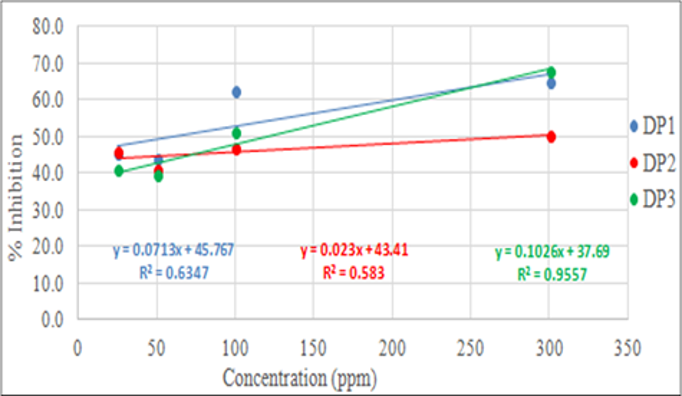Abstract
Gout is characterized as an inflammation and warmth in the joints. It is associated with hyperuricemia wherein an upregulation of xanthine oxidase in purine degradation leads to increased levels of uric acid in the blood. Gout is not fatal. However, it affects one’s quality of life. Thus, this research primarily focuses in determining the inhibitory activity of xanthine oxidase in the methanolic leaf extract of bitaog (Calophyllumblancoi), bolongeta (Diospyrospilosanthera), and duhat (Syzygiumcumini) in gout. A quantitative- experimental research method was used in the study and the data were obtained by measuring the percent inhibition of the samples using UV-Vis spectrophotometer at 290 nm. The results showed that the methanolic leaf extract of above stated plants exhibited exemplary inhibition in comparison with the standard drug, allopurinol. The IC50 value determines the ability of the inhibitor to decrease the biotransformation of a substrate. The principle behind IC50 is, the lower the value the higher the inhibition. The bitaog (Calophyllumblancoi) trials have the lowest IC50 value with an average of 124.3 after the standard drug, followed by bolongeta (Diospyrospilosanthera) have an average of 155.3 IC50 value. Then duhat (Syzygiumcumini) showed the highest IC50 an average of 208.8. The bitaog (Calophyllumblancoi), next to allop urinol, showed the highest inhibition among all the extracts followed by the bolongeta (Diospyrospilosanthera). The least inhibitory activity was observed in duhat (Syzygiumcumini). Hence, it can be concluded that bitaog (Calophyllumblancoi), bolongeta (Diospyrospilosanthera), and duhat (Syzygiumcumini) can inhibit xanthine oxidase using in vitro analysis.
Full text article
Authors

This work is licensed under a Creative Commons Attribution-NonCommercial-NoDerivatives 4.0 International License.

